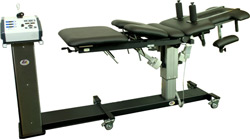Sleep, why can’t I get enough? This is the question that most of us ask even knowing that sleep deprivation is often voluntary. Many people would rather work late, watch television, or do just about anything else than obtain what they need in sleep time: 7-8 hours of sleep each night.
Sleep allows your body both to relax and replenish itself. For example, studies show that growth hormones secreted during sleep help repair damaged tissue.
For most people, puffy baggy eyes, a droopy face, and an overall draggy demeanor is what they see when they look in the mirror after a hard night of no sleep or insufficient sleep. In contrast, a good night’s sleep, especially when you sleep well night after night, is far more likely to leave you with clearer skin and an improved attitude to life.
Alcohol may cause insomnia or frequent awakenings, and to improve your sleep time and quality, you should eliminate or at least cut back your alcohol consumption.
Caffeine is another sleep robber, because it’s a stimulant that prevents you from falling asleep with ease. Caffeine remains in the body 3 to 7 hours after consumption! Heeding this information, avoid foods and drinks with caffeine, as well as chocolate (which also has caffeine in it) at least 3 hours before you want to go to sleep.
Sometimes medications can induce insomnia as a side effect. Ask your doctor if your medicines could be keeping you awake. If so, your physician may be able to change the medication or reduce the dosage.
You may also want to try a chiropractic adjustment or an acupuncture session which can aid in helping you regain your normal sleep patterns.
What if you can’t sleep, despite following the above advice? Consider making some lifestyle changes.
First, analyze your bedtime habits. Are you going to bed at midnight and expecting to fall asleep instantly? This is less likely to happen if you’ve been having an animated discussion with family or friends or watching an exciting movie on TV. Delay the debate and tape the movie and watch it another day, and turn in earlier.
Also don’t eat fashionably late. If you dine at 9:00, and then expect to fall asleep at 10:00, think again! You’ve given your digestive system plenty to work on. Better to eat earlier, so your body can wind down at night.
Now, if you smoke, keep in mind nicotine is a stimulant that makes it hard to fall asleep and stay asleep so avoid smoking for several hours before bedtime.
Ask yourself what’s going on with your life now. Are you stressed out, as many people with insomnia are? If so, it’s time to bring down stress levels. One way is through slow, deep breathing. Another strategy to achieve shuteye is mastering simple relaxation therapy techniques. Lie down, close your eyes, and imagine different muscle groups relaxing. You can start with your feet and work your way up to your head, in your mind. Or start with your head and work down to the toes.
Often gentle exercising is an inducement to sleep. Experts report walking is a great cardiovascular exercise that can also relax the body so that it’s ready to fall into a nice deep sleep when it’s time. Take a brief walk a few hours before you’d like to sleep.
It’s important to use your bedroom for sleeping and intimacy only. Avoid using it as an office away from the office or another place to watch television. If you’re facing sleepless nights, purge your bedroom of work and entertainment paraphernalia.
Transform your bedroom into a sleep-inducing room. Do you have a comfortable mattress, clean soft sheets, and is the thermostat set at a moderate temperature? If not, then go ahead and make the needed changes. You may find that they help lull you into dreamland.
 These days, you simply can’t eat enough food to obtain all of the proper nutrition you need due to the fact that our soils have been depleted, or it may be difficult to find enough locally grown produce to fulfill our needs. You know that supplements are beneficial, but do you know the key questions to ask yourself about buying the right vitamins, minerals and other nutritional supplements?
These days, you simply can’t eat enough food to obtain all of the proper nutrition you need due to the fact that our soils have been depleted, or it may be difficult to find enough locally grown produce to fulfill our needs. You know that supplements are beneficial, but do you know the key questions to ask yourself about buying the right vitamins, minerals and other nutritional supplements? 







